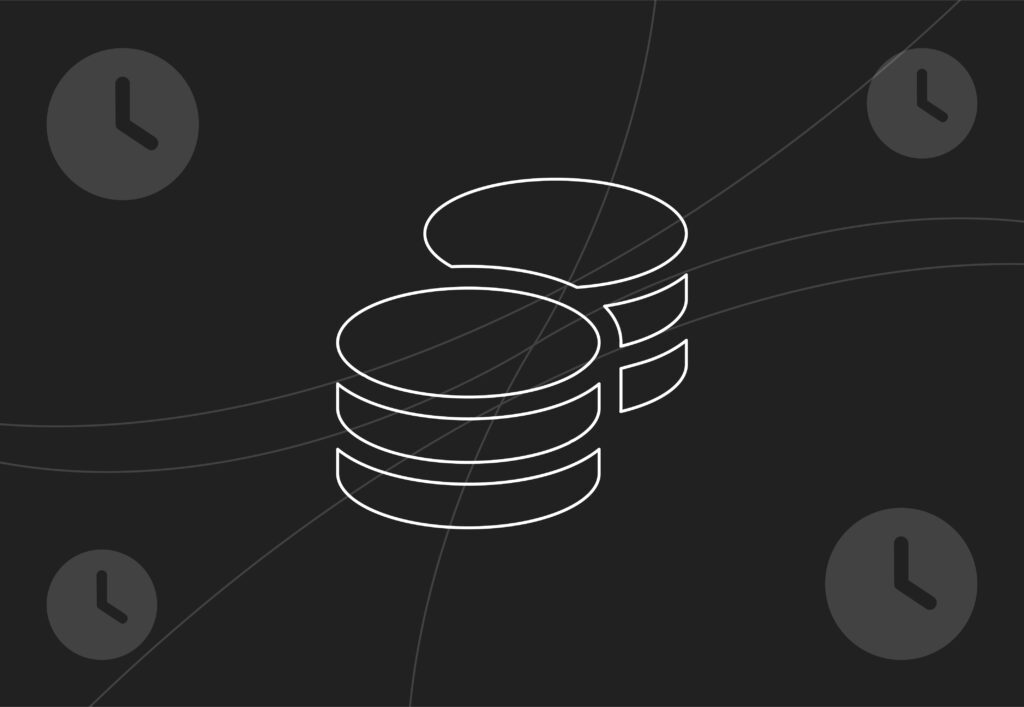
How to get started in paid social

As someone who has worked in paid social for nearly two years and has over five years of experience in digital marketing, I would say I know my fair share of social media knowledge. That’s why I’m here to guide you on getting started with running your own paid ads. Whether you’re a complete beginner or have some marketing knowledge, I’ll be sharing my essential tips and tricks to help you stand out and get started in the ever-changing world of paid social.
Before we dive in, I wrote another article that I recommend reading about my first year in paid social media, which you can find here.
Okay, let’s start with the basics.
Paid social is the process of running adverts on social media platforms such as Facebook, Instagram, TikTok, LinkedIn… well, any social media platform you can think of, really. The most popular paid social ad platform is Facebook (Meta), holding the top spot since 2007. As of 2025, it’s still the most used social media platform, and ad revenue reached $164.5 billion in 2024.
Marketers and businesses are essentially paying to display their content or ads on social media platforms. These ads can be targeted to a variety of audiences, from broad users to a much narrower group of interest-based focus or retargeting ads.
Paid social advertising can appear on platforms in various formats. These include static images, carousels, videos, catalogue ads, and even messages. They are typically identifiable by tags such as “sponsored, ” “promoted,” or simply “ad.”
Unlike organic social media (which consists of posts without ad spend behind them), paid social offers businesses a fantastic opportunity to enhance brand awareness, broaden their reach, direct users to their websites, and boost conversions.
A key thing to keep in mind with paid social is that it’s a very top-of-funnel channel, meaning that user intent is limited. In contrast, PPC ads featured on Google have a much higher intent, resulting in a higher number of conversions. Paid social is capable of driving purchases, but it’s also a fantastic channel for boosting awareness, driving engagement, and directing traffic to your website. Paid social is an important channel that’s incorporated into many marketing strategies.
In today’s digital world, pretty much everyone is on social media! TikTok has over 1.58 billion monthly active users, and Facebook boasted a whopping 3.065 billion monthly active users by the end of 2024. So if someone tries to tell you social media is dead, I’m here to tell you it’s very much alive and thriving. Not only that, it has a super-engaged audience–people literally spend hours scrolling on TikTok–so it’s a perfect channel to get attention for brands on.
However, we’ve seen recent trends in the last few years (especially with the rise of AI) of consumers preferring more genuine and authentic content as opposed to artificially generated content. While anyone can launch ads on paid social platforms, it’s crucial to have a well-established strategy that integrates seamlessly into the overall marketing mix.
No, we don’t just scroll Instagram all day. One of the main reasons I love working in paid social is that every day is different; there’s no one-size-fits-all approach. Day-to-day responsibilities can range from campaign set up, creative testing, reporting, and so much more. The joy of paid social lies in diving deep into the nitty-gritty details, analysing the strategy, launching engaging content, and watching ROAS soar!
As a paid social specialist, it’s our job to curate a strategy with scroll-stopping ads on various platforms. Each platform has a different audience base, so more often than not, brands will curate individual strategies and approaches for each platform. This can involve adjusting campaign objectives, altering any ad creative and copy and also diversifying targeting. TikTok, for instance, is diverse, but very popular with younger generations, especially Gen Z and younger Millennials. Pinterest, on the other hand, features users in their inspiration phase. Identifying who your audience is is essential when developing a strategy.
Some core responsibilities if you work in paid social can be broken down into specific sections:
Strategy development
This involves setting campaign goals that align with brand KPIS and objectives. Sometimes, it’s our job to determine which social media platforms will achieve these goals best. From there, we build a strategy focusing on campaigns that align with business goals, be it conversions, leads or brand awareness.
Audience targeting
A core element of building a strong paid social media strategy is understanding the audience and testing different avenues. The right audience leads to better results, especially because you can get so specific with interests, behaviours and demographics. The better your targeting is, the more likely your audience will convert.
You can target based on:
- Location (city, country, radius)
- Age
- Gender
- Interests (e.g. fashion)
- Behaviours (e.g. online shoppers)
- Demographics (e.g. job titles)
You can also target using custom audiences. These are warm audiences who have already interacted with your brand in some way. You can create custom audiences using:
- Website visitors
- App users
- Video viewers
- Instagram/Facebook engagers
- Email lists or custom fields
In addition, Meta can create Lookalike audiences from these custom audiences to find new ones that are similar to them. This can be done by choosing:
- The source audience
- The country
- The % similarity range (1% is the most similar, 10% is broader.)
There’s also Advantage+ targeting, which is Meta’s AI-driven approach. Meta is very much leaning into their own tools, and the Advantage+ audience is a big one here. Advantage Detailed Targeting allows Meta to go outside selected interests if it thinks it will convert better.
Ad creative & copywriting
A winning strategy isn’t just about the numbers; creative and storytelling play a huge role. Paid social is a very visual channel, and ads include:
- Images
- Videos
- Carousels
- Reels
- Stories
Great creative is what stops people from scrolling and clicking on the ads. They need to grab attention, communicate exactly what they’re promoting quickly and easily and spark an interest fast.
Platform management
Setting up accounts, implementing tracking, and managing general accounts are key to ensuring that ads don’t just look good, but also perform smoothly. Account set up involves setting up and organising the ad account in the platform’s Business Manager. There are a lot of account optimisations involving assigning permissions and getting access, but once that’s up and running, you can implement tracking.
The Meta Pixel is a small piece of code to add to your website. In basic terms, it tracks what users do on your site. This includes page views, adding items to a basket and making a purchase. Tracking ensures that conversions are being tracked effectively and helps measure the ROI of campaigns. You can link conversions to your paid social efforts, understanding the impact your ads are actually having, which in turn will lead to more detailed reporting.
Budget management
Of course, with a paid social media strategy, there will be budget to consider. Although it’s a very creative-led channel, utilising budget effectively isn’t just smart, it’s essential. Budget management is the process of planning, allocating and adjusting ad spend to get the best possible return.
Identifying the ideal budget may seem daunting, but once you’ve understood the types of campaigns you want to run, you can gauge it from there. There are a few types of budgets you can use:
- Daily budget: A fixed amount spent each day for steady delivery (although some platforms may spend more or less depending on whether they think it’ll drive results).
- Lifetime budget: An amount spent over a fixed time period. This is great for event-based or date-sensitive campaigns.
- Campaign Budget Optimisation: Spend that Meta automatically distributes across ad sets based on performance.
If you want to get started running paid social ads as quickly as possible, here’s a basic breakdown of areas you’ll need to consider, especially if this is your first time running a paid social campaign.
If you’re starting out, it’s essential to invest in platforms where you have an established audience. I cannot stress the importance of organic social enough. A presence for your brand online can not only build trust and credibility, but it can boost your paid social performance. Users will and do click through ads to check out brands’ profiles, especially in a world of AI where authenticity is becoming more important than ever. What they see there can make or break that first impression. Additionally, a well-maintained social media profile can lead to more engagement and genuine connections, boosting ad performance. For many of my clients, I lean on the organic social content, frequently seeing boosted posts drive a higher purchase volume than other ads, due to the quality and authenticity of the content.
I recommend starting with a single platform initially, as it will give you a chance to build awareness and scale. Juggling too many different networks, strategies, spend, and creative can be overwhelming at first. Invest in a channel you’re familiar with and that has an established brand presence to lean on. Meta Ads Manager is a great place to start; it’s pretty much the industry benchmark and includes targeting on Facebook and Instagram.
A key thing to keep in mind is avoiding doing too much at once. With a brand new account, you’ll need to build the data and learnings, so starting slow and building up to a more complex strategy is completely fine to do.
Establish your goals
I may be starting to sound like a broken record, but understanding what you actually want to achieve from a paid social strategy is vital. Before you start running anything, outline what it is you want to accomplish. It could be boosting brand awareness, driving sales, or getting more people on your website. Whatever you choose, you should understand this before building a paid social strategy.
A lot of ad platforms like Meta make goal creation very easy. Simply choose one of the objectives when creating a campaign, and it will tell you what it’s perfect for.
Established goals shape the entire campaign strategy. It establishes the audiences you target, the creative used, and how you structure your funnel. Additionally, understanding your goals allows you to test and adjust campaigns more efficiently, ultimately identifying which ads are the most effective and aiding in the more effective allocation of your budget. Running arbitrary paid campaigns without goals will lead to a mismatched strategy and wasted ad spend.
Get inspired
Get online and start researching who you’re up against. One of the most important things you can do is identify who your competitors are and what type of ads and content they’re pushing. There are some fantastic ad ideas out there; there are also some atrocious ones. Take a look at the good and the bad. Research ads from smaller companies and not solely from more prominent, big-name brands. Comparing yourself against much larger companies like Starbucks or Adidas is unrealistic as a startup.
There are a few ways to research new ideas. Having a deep dive into an organic social account is a start. Take a look at the type of content they’re posting, their tagged content, and read the comments to build a picture of the story they’re trying to build. Additionally, you can look up businesses on ad libraries, including:
From the assets you find here, keep in mind what you like about them and how they talk to customers. You can generally guess what the campaign objectives are based on the CTA button, so think about ads that would suit your specific campaigns.
Research ad creatives, copy and messaging
Creative is most certainly key when it comes to paid social. A paid social strategy is very creative driven, and a winning one looks to constantly improve on itself by testing different variations. Most ad platforms are pretty good at outlining what you need to get started. Ad specifications and sizes are the first step here, and you can usually identify which sizes are needed for each platform with a quick Google search.
Understanding the message you want to convey with your creative is also crucial. As paid social is a creative-first platform, adjusting your messaging and asset structure can lead to greater success. Something to always keep in mind when briefing in or creating new content is who it’s targeted at. Sure, you can have super broad ads that target the entirety of the UK, but when you’re testing different audiences or even for a retargeting campaign, tailor your messaging and imagery to suit.
In addition to the creative side of ad campaigns, the messaging and ad copy you use are a huge part of it. Copy in ads appears in several places, including these main ones:
- Headline text
- Primary ad copy
- Call to actions
When it comes to messaging, a consistent tone of voice should be used across all platforms. If the brand already has a strong branding, research the type of messaging and tone used on their website and social channels. This can help introduce more consistency in your messaging, building more trust and credibility.
Optimise and track analytics
A paid social media strategy that’s set up to win is one that’s willing to adapt and change over time. After all, the digital marketing landscape is constantly evolving, so it makes sense that your strategy should too. With clear objectives, a strong creative strategy and informed targeting, optimisations should become easier. With regular testing, you’ll begin to understand exactly what works for the brand. All clients are different, so something that may work for one client may not be as impactful for another.
Determining whether or not your campaigns have been successful really comes down to the data. Look at in-platform metrics for different time periods, such as this month and the last 7 days, as well as playing around with attribution settings. Meta uses a 7-day click 1-day model as a standard; I like to look at a 1-day click when comparing it against GA4 to understand the purchase variations. You can break your audience into new and existing segments to influence your strategy and look for opportunities to optimise future campaigns.
Most agencies and businesses use external analytics software to track and report on data. Paid social specialists can expect to write up monthly reports to provide feedback on performance and discuss any strategy changes. Regular reporting will help inform your strategy to become better.
Looking to go beyond the basics?
That’s an overview of the basics, so you should now be more set to work towards your first paid social campaign. But if you’re looking to go beyond the fundamentals and don’t know where to start, we can help.
We pride ourselves on staying ahead of the curve, especially when it comes to new updates in the paid media space. Get in touch with our paid social media team for a bespoke strategy that can help you achieve your business goals.
Call us on 0161 327 2635 or email our team at info@embryodigital.co.uk.


